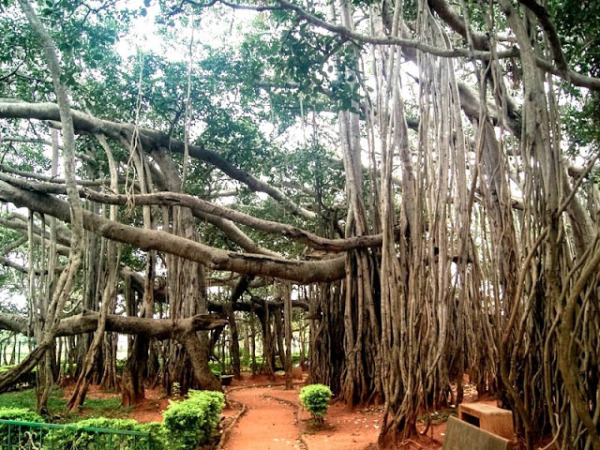
At the 18th India-Russia Annual Bilateral Summit, when questioned about India’s stance on environment conservation and climate change, the honorable Prime Minister Narendra Modi gave a very emphatic answer resonating with the views of millions of Indians. He cited ancient Indian wisdom on the protection of environment and how the 5000 year old legacy still forms the core of India’s social fabric and sustainable policies.
It is indeed intriguing to note that the ancient Indian literature serve as vast reservoirs of knowledge related to everything environment. Whether it is about maintaining ecological balance, weather cycles or simply protecting Earth- Vedic age seers indeed understood the environmental phenomena profoundly. The Rig Vedic hymns, for instance, vividly describe the environment (paryavaran) that lies between the heaven (dyaus) and earth (prithvi). Seeking blessings from the five elements of nature: Prithvi (Earth), Jal (Water), Vayu (Air), Agni (Fire) and Aakash (Ether), people in early days abided by Vedic laws and refrained from harmful practices to preserve and sustain nature.

Apart from the Vedic discourse, the centuries old Jain and Buddhist traditions too enclose the principles of ecological harmony and sustainability. The doctrines guide one to make efforts to blend spiritual and physical practices as moral responsibilities. They believe the universe to one whole entity rooted in divinity. Thus, every development around us, that is all aspects of man-environment relationship, has divine origin. Some of the primary principles described in these various ancient sources are as follows:
- Pancha Mahabhutasor the 5-elements are instrumental in shaping the human lives, with a continuous cosmic interconnection. As per the Vedas, the five interdependent elements of space, air, fire, water and earth create the environment, originating from prakriti (primeval energy). The interdependence exists in relation to the supreme reality or Brahman. The Upanishads states “From Brahman arises space, from space arises air, from air arises fire, from fire arises water, and from water arises earth.” The human sensory organs are directly linked to these elements, thereby laying the foundation of man-environment relationship. Thus, environment is what exists within and outside the human body- like an inseparable entity.
- Protecting the environment is Dharma (Duty) – An essential concept, Dharma represents the cosmic order, duty and virtue. The early Indian literature discusses in detail the absolute necessity to protect the environment describing it as the dharma of manushya (Human). Traces of such deep rooted understanding of environment can still be found amongst the traditional/ indigenous Indian communities like the Bishnois, Bhils and Swadhyaya. For them environment preservation is act of Dharma than a mere conservation practice. For example, when Swadhyayis build Vrikshamandiras (tree temples), or when Bhils conduct their ceremonies in sacred groves, they are merely expressing their reverence to the mother earth. For them, the correct way of life is deeply connected with the nature’s force, whose preservation is their responsibility and is definitely not separate from their identity. The Chipko movement wherein the community women hugged trees to protect them from clear-cutting by vested interests — represents similar devotion to protect the sacred connection between earth and being.
- Karma & Rebirth- Karma, or our actions create consequences- good or bad -determining our future destiny, resulting in the place we assume once reincarnated. It is believed that every being travels through millions of life & death cycles taking different forms depending on their karma- be it a human, animal, bird etc. This elaborates on the concept of interconnectedness, wherein each species and the earth are a fragment of an extended network of relationships associated for over a millennia. It, therefore, becomes a natural law to respect and revere each and every member of this natural network, thereby converting bad karma into good.
- Ahimsa (non-violence) is the supreme duty-Non-violence exhibited towards earth mends one’s negative karma. Hurting another being begets bad karma, thereby preventing one from attaining moksha (liberation). Promoting sustainable living, Vedas and Upanishads instruct to shun violence and follow a vegetarian diet.
- Sanyasa (asceticism) – Simple living and high thinking have formed the core of Indian discourse. Practicing restraint in consumption and simplicity together lead to moksha (liberation) as there is much respect for all the environment. It further exhorts renunciation of ambition and self-sacrifice. The philosophical teaching “Tain tyakten bhunjitha” translates to “Take what you need for your sustenance without a sense of entitlement or ownership.”

Principally then, the ancient Indian philosophy and literature has understood the man in context and relation to the environment. Further, Earth is considered to be the manifestation of goddess who provides nourishment, and therefore prayed to by human kind and treated with utmost respect. This nourishment is provided through the five elements of space, air, fire, water and earth which works on the principle of interdependence. It is our duty or Dharma to care of this symbiotic ecosystem through simple sustainable practices. Simplicity is the essence of life, basis which the communities should develop sustainable economies. Our attitude towards environment builds up or negates our karmic bank balance, decisive for next birth. Man undeniably shares a deep bond with nature at all planes- spiritual physical and intellectual, which calls for balance.
“Let there be peace in the heavens, the Earth, the atmosphere, the water, the herbs, and the vegetation, among the divine beings and in Brahman, the absolute reality. Let everything be at peace and in peace. Only then will we find peace.”
Atharva Veda
